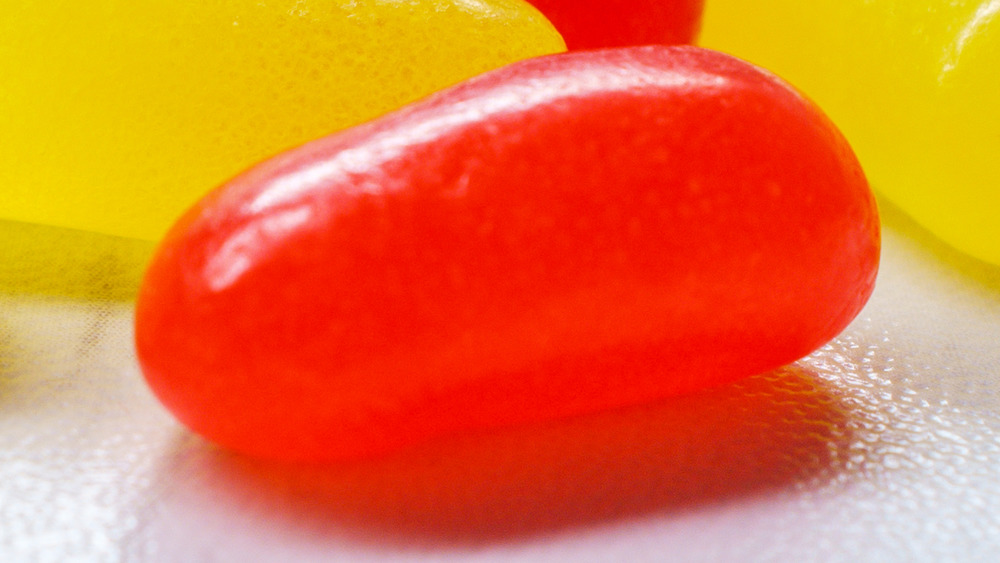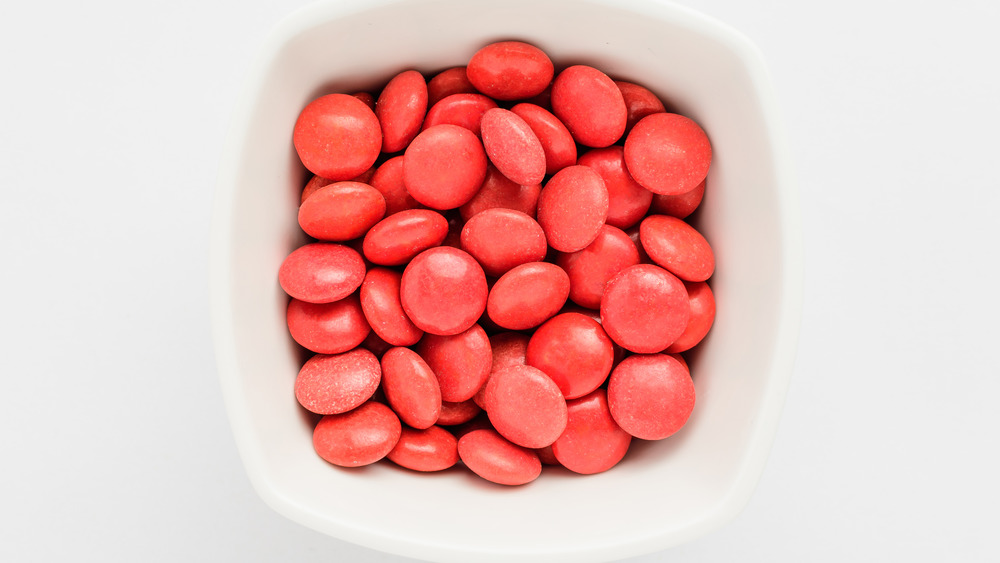What You Should Know About Red Dye 40
Red Dye 40 — or Red Number 40 — is a Starburst ingredient listed by Tastessence and probably the reason why the red ones seduce us with their vibrancy. As Shilpa Ravella explains in a piece railing against the omnipresence of synthetic food colorings in the U.S. for Slate, Red No. 40 is one of a number of synthetic dyes banned in Europe due to a concern about their connection to hyperactivity in children.
In America, however, they run free because these colorings tap into our evolved proclivity for bright, colorful foodstuffs. Furthermore, the coloration is key to the brands. Butter is yellow. McDonald's strawberry sundae is red — thanks to Red No. 40. Without such colors, we would struggle to recognize what we put in our mouths.
Hold up, however. We should probably examine the whole hyperactivity part. While the FDA approves the use of Red No. 40 in cereal, beverages, gelatins, puddings, dairy products, and confections, others in the U.S. have raised concerns.
The most fleshed out of these is a report titled Seeing Red: Time for Action on Food Dyes published by the Center for Science in the Public Interest (CSPI). Compiling a meta-analysis of studies on how diets affect children, the authors discern that eight percent of children display symptoms of ADHD potentially due to dyes, while a further unknown amount may suffer adverse side effects. Other purported health risks, as reported by Eating Well, include cancer. The CSPI authors then call on the FDA to ban synthetic dyes.
The other reasons to avoid Red Dye 40
The toxicity associated with Red No. 40 is due to the fact that it is made from crude oil, as Atlas Obscura reports. This is an improvement over synthetic dye's previous ingredient: coal tar.
However, we should consider what foods boast Red No. 40 among their ingredients. The first comparison the CSPI gives is between the British strawberry sundae at McDonald's and the American version. In Britain, McDonald's uses strawberries as part of its coloring process. After all, it's a strawberry sundae. In the U.S., they use Red No. 40.
The importance of the comparison is not so much the ingredients between the two than the choice of the McDonald's strawberry sundae itself. Every example given in the report is an item that would fall under the categories of junk food or fast food. Other lists of foods with Red No. 40, such as International Association of Wellness Professionals or Women, follow this trend. Red No. 40 appears in condiments, snacks, cakes, yogurts, and the like.
In effect, then, while Red No. 40 may indeed promote ADHD, that is only an additional negative to the amounts of unhealthy food the child is eating, foods that lead to childhood obesity which, according to the CDC, affects about 13.7 million American children and adolescents. In other words, Red No. 40 could be harmful, but it primarily makes bad foods worse, not healthy foods unhealthy. The final verdict? Red No. 40 is bad, but the food itself is worse.

